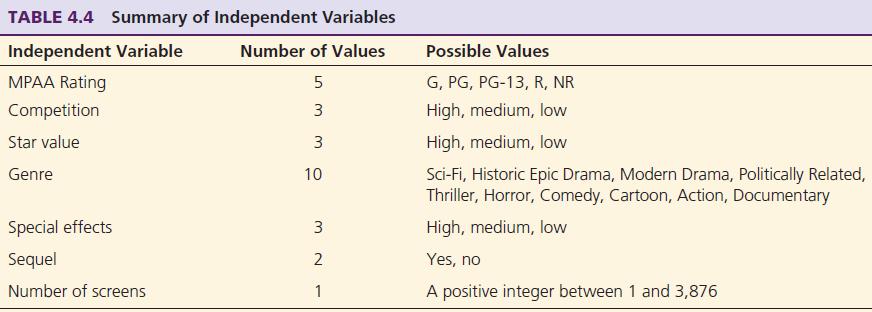For this exercise, you will replicate (on a smaller scale) the box-office prediction modeling explained in Application
Question:
For this exercise, you will replicate (on a smaller scale) the box-office prediction modeling explained in Application Case 4.6. Download the training data set from Online File W4.2, MovieTrain.xlsx, which is in Microsoft Excel format. Use the data description given in Application Case 4.6 to understand the domain and the problem you are trying to solve. Pick and choose your independent variables. Develop at least three classification models (e.g., decision tree, logistic regression, neural networks). Compare the accuracy results using 10-fold cross-validation and percentage split techniques, use confusion matrices, and comment on the outcome. Test the models you have developed on the test set (see Online File W4.3, MovieTest.xlsx). Analyze the results with different models, and find the best classification model, supporting it with your results.
Data from Case 4.6
Predicting box-office receipts (i.e., financial success)of a particular motion picture is an interesting andchallenging problem. According to some domaexperts, the movie industry is the “land of hunchesand wild guesses” due to the difficulty associatedwith forecasting product demand, making the movie business in Hollywood a risky endeavor. In support of such observations, Jack Valenti (the longtime president and CEO of the Motion Picture Association of America) once mentioned that "no one can tell you how a movie is going to do in the marketplace. . . not until the film opens in darkened theatre and sparks fly up between the screen and the audience." Entertainment industry trade journals and magazines have been full of examples, statements, and experiences that support such a claim. Like many other researchers who have attempted to shed light on this challenging real-world problem, Ramesh Sharda and Dursun Delen have been exploring the use of data mining to predict the financial performance of a motion picture at the box office before it even enters production (while the movie is nothing more than a conceptual idea). In their highly publicized prediction models, they convert the forecasting (or regression) problem into a classification problem; that is, rather than forecasting the point estimate of box-office receipts, they classify a movie based on its box-office receipts in one of nine categories, ranging from "flop" to "blockbuster," making the problem a multinomial classification problem. Table 4.3 illustrates the definition of the nine classes in terms of the range of box-office receipts.

Data Data were collected from a variety of movie-related databases (e.g., ShowBiz, IMDb, IMSDb, AllMovie, BoxofficeMojo) and consolidated into a single data set. The data set for the most recently developed models contained 2,632 movies released between 1998 and 2006. A summary of the independent variables along with their specifications is provided in Table 4.4. For more descriptive details and justification for inclusion of these independent variables, the reader is referred to Sharda and Delen (2006).

Questions for Case
1. Why is it important for many Hollywood professionals to predict the financial success of movies?
2. How can data mining be used for predicting financial success of movies before the start of their production process?
3. How do you think Hollywood performed, and perhaps still is performing, this task without the help of data mining tools and techniques?
Step by Step Answer:

Analytics Data Science And Artificial Intelligence Systems For Decision Support
ISBN: 9781292341552
11th Global Edition
Authors: Ramesh Sharda, Dursun Delen, Efraim Turban





